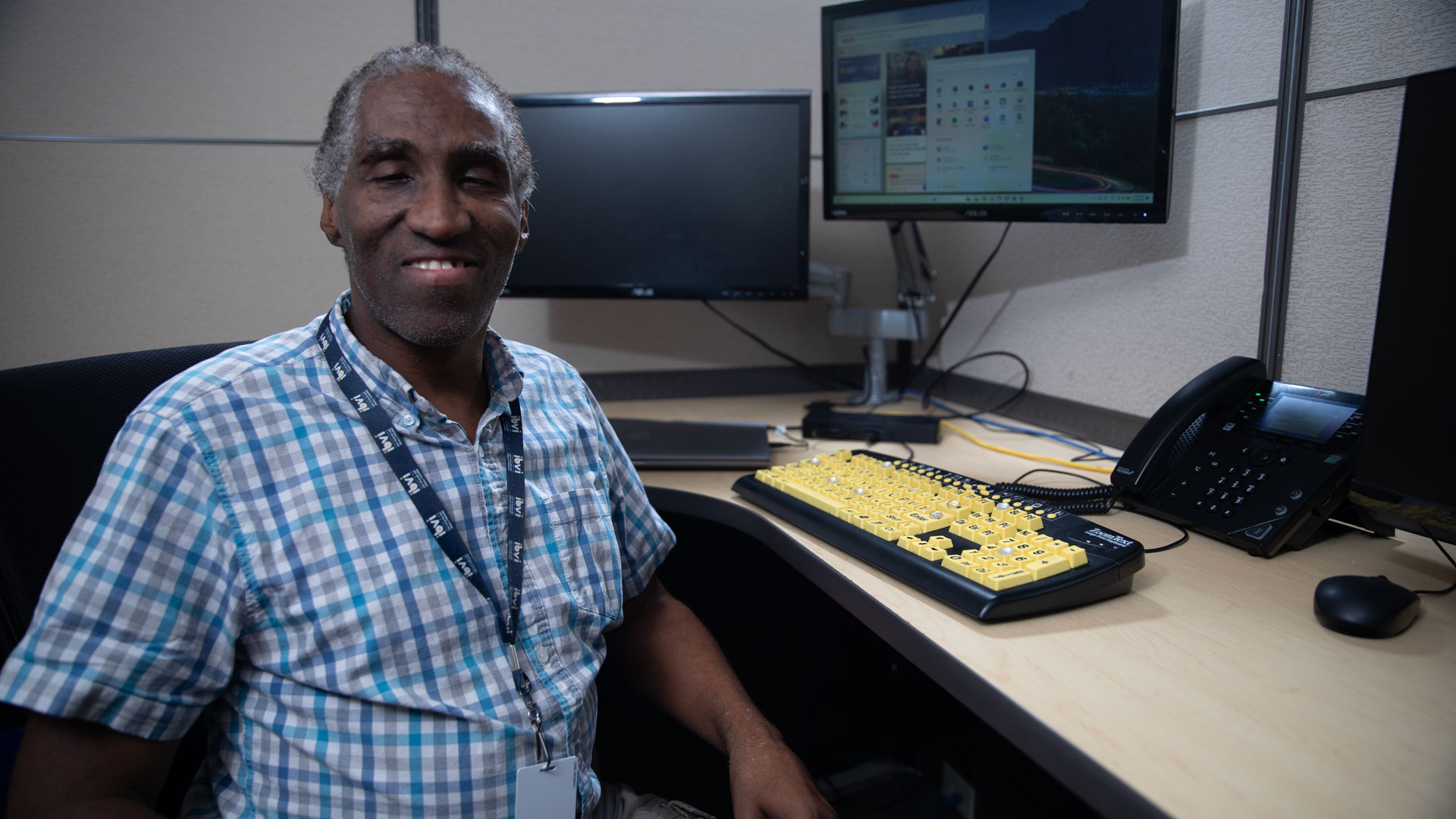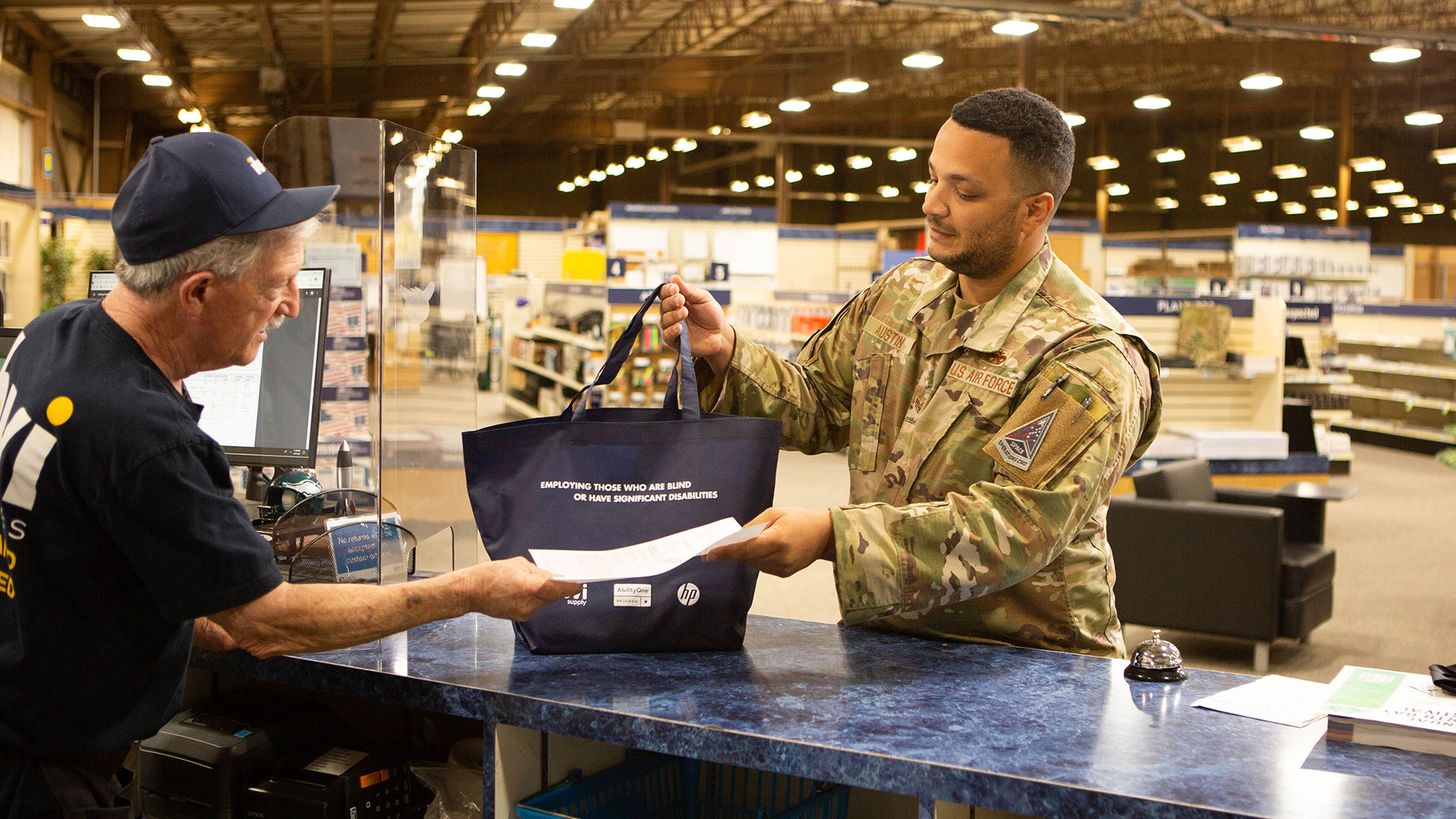As someone with a lifelong interest in fashion, Deborah Ambro-Crandell aspired to attend the Fashion Institute of Technology in New York with the goal of embarking on a career as a fashion journalist or a buyer for a high-end department store. And while her visual impairment took her on a different course in life, Deborah still remains focused on her love of fashion. Needless to say, when she was offered the opportunity to model at Milwaukee Fashion Week, she happily accepted, thrilled to have the chance to help talented young designers execute their vision.
Deborah walked down the runway in an outfit from BAQ – an innovative line created by Mount Mary University Students Ana Mercado and Jessika Jones. Deborah praised both designers for their goal of making fashion feel accessible to a wide audience, as their show featured an array of everyday people as models, including two models with Down Syndrome. In fact, Deborah became the very first blind model at Milwaukee Fashion Week!

As our resident well-dressed fashionista, we asked Deborah to share style tips for others who may have recently lost their vision. Needless to say, she supplied us with a wealth of tips and tricks for those who are wondering how to stay fashionable after becoming visually impaired.
1. Ask for help – particularly when you need to dress to impress!
“My biggest piece of advice would be have a trusted friend or partner inspect the things you buy or the things you want to wear. I can’t tell if there’s a stain on my shirt and I would be mortified if I went to a job interview in a white blouse and there was a giant coffee stain on it,” she says.
2. Use technology to make sure your clothes match
Deborah often makes use of her color identification tool, explaining, “It’s not 100% accurate, but it’s pretty decent and will tell you the color of a garment.” She adds that she mainly uses it for basic tasks, like matching socks. While she uses a traditional color identifying tool, she encourages others to check out the wide range of apps that are now available.
3. Find online retailers that get descriptive
Can the blind and visually impaired shop for clothing online? Absolutely! In fact, Deborah says it’s her secret weapon. “I buy a lot of stuff online from QVC and HSN. They’re incredibly descriptive and their website usually has all of the info I need.” In fact, both sites have become her go-to. “Everything I’m wearing right now – from my Clarks shoes to my Halston shirt – I bought on QVC!” she laughs.
4. Know your measurements and a good seamstress
Deborah ensures her clothing fits just right shopping by her measurements. “It’s important to know both your measurements and all of your sizes because you want your clothing to fit you right,” she explains, adding, “It’s always good to know someone that can sew so you can get your pants hemmed and tailored. There’s nothing worse than having something that is too tight or too big!”
5. Stay organized
Deborah’s biggest bit of fashion advice? Stay organized. “There’s nothing worse in the morning than knowing you have a matching jacket, but not knowing where it is!” she quips. She offers the following closet organization tips for the blind and visually impaired community:
Organize your closet by color zones. This is one of the easiest ways to keep your clothing organized as a blind or visually impaired person.
Find an identification system that works for you. “I tend to buy multiples of things in different colors and I’ll cut the corner out of a tag so I can color identify,” she explains, adding that she makes sure to keep all matching items like suits and bottoms together on the same hanger. Others find that marking their hangers works well – for example, using a wire hanger for black clothing, a plastic hanger for white, tying a rubber band around the neck for blues, etc.
Organize by season. For those who live in climates that require both a winter and summer wardrobe, Deborah suggests packing away out-of-season clothing. The less you have to sort through, the better!
Keep shoes in shoeboxes. “Shoe boxes help a lot,” she says. “I have a little bit of vision, so I can put a gigantic ‘B’ on the front of the box and know it contains black shoes.”

For retailers who wish to improve the accessibility of their e-commerce sites in order to enable blind and visually impaired customers, Deborah provides the following tips:
Make use of creative text. “I love good words. I’m a sucker for words. If something has a great description, I’m sold!” laughs Deborah.
Clearly describe the fabric and cut. “I like to know both fabric type and the way a garment fits. Is it semi-fitted, fitted, or loose? Is it 40% polyester and 60% cotton? I like to know that information because that’s going to determine what size I get,” she says.
Provide accurate measurements and size information. “I like size charts. A lot of times on QVC, they’ll have a size chart and additional information. For example, they’ll say ‘this garment is semi-fitted, you may want to go up size’.
“Style is important, even for blind people,” explains Deborah. “A lot of times, we as blind and visually impaired people we don’t realize that even though we don’t have that first impression based off someone’s looks, it’s still important to present ourselves in a stylish, professional and upbeat way. It kind of sets the tone for what you’re trying to do.”
Read more about how Deborah became the first blind model at Milwaukee Fashion Week under the “News” section of our site: Blog & News
Looking for more advice? Check out Blind Living Radio Episode #98, where we interviewed blind beauty vlogger Lucy Edwards, who shared some great tips on how to keep beauty products organized! Blindlivingradio.com


